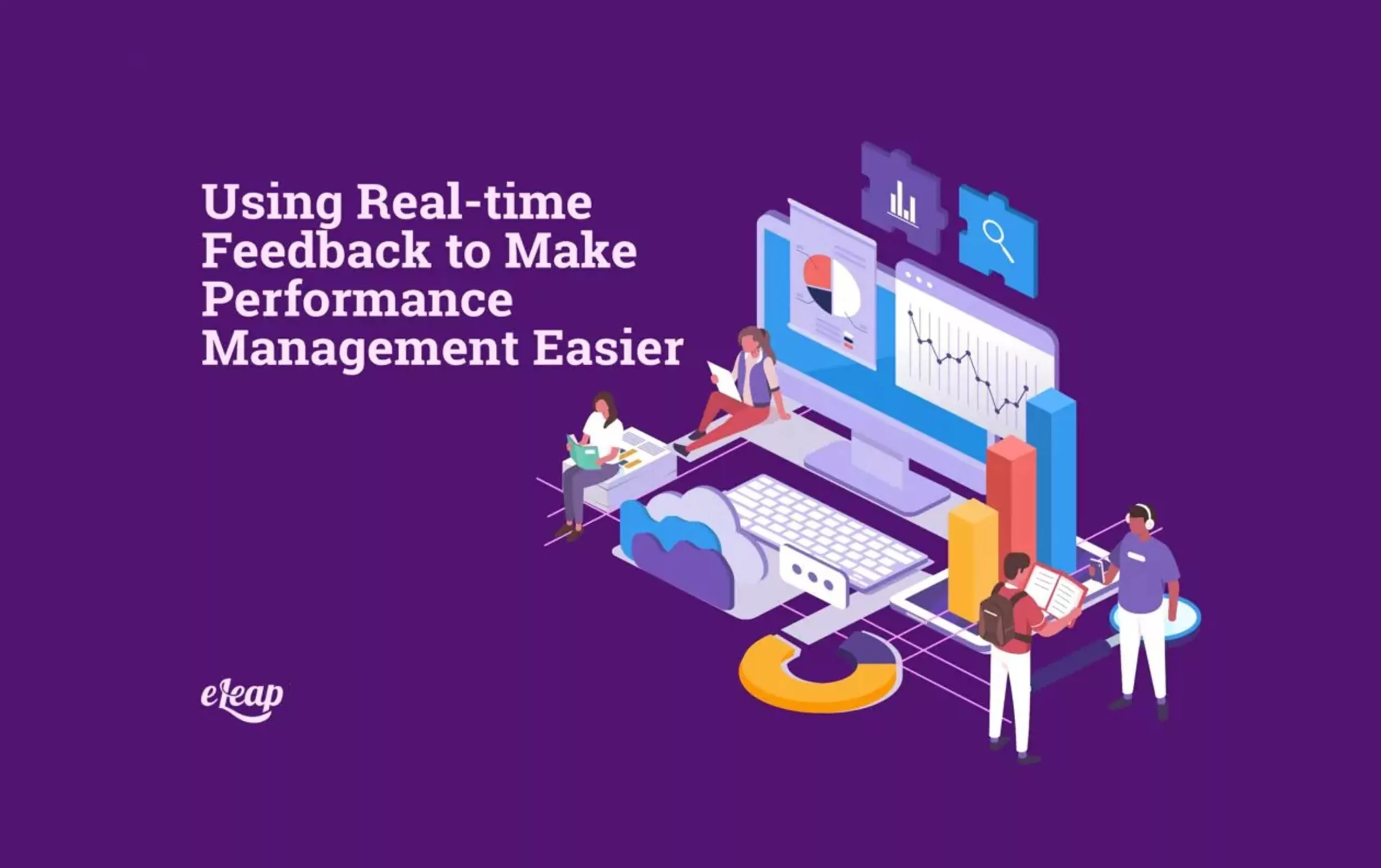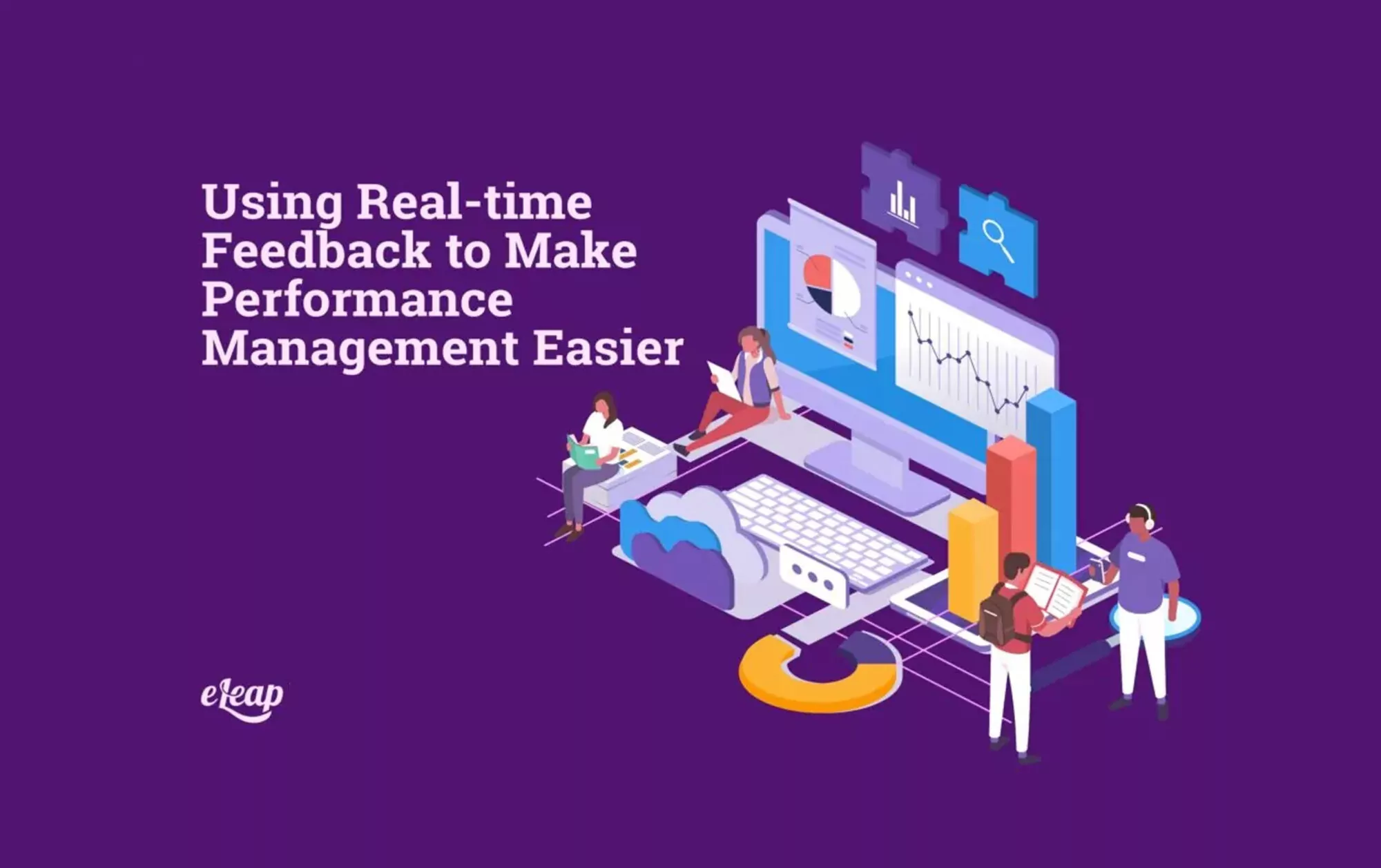Using Real-time Feedback to Make Performance Management Easier

Previously, performance management and company assessments were conducted without much data or insight. Employees were given a packet with a series of questions in what was nothing more than a glorified survey. Explore how eLeaP®’s Performance Management Platform can simplify evaluations, boost productivity, and drive measurable results.
Who knows precisely how much these performance assessments were even factored into the future of a company? However, with major changes taking place in the corporate structure of our world, things have taken a major detour.
Most companies now take advantage of real-time monitoring and feedback to improve the assessment process. Advances in technology have changed the way we look at data and have drastically improved how performance management is approached.
In the following article, we will discuss how regular and updated feedback makes performance management much easier. Taking this approach, as opposed to a rudimentary questionnaire every six to twelve months, has drastically improved how companies help employees improve their performance.

Regular Feedback and Performance
When a review was written of an employee in the past, a manager sat down and thought about moments that stuck out regarding employee performance during the prior year. This was an extremely inefficient way to gauge performance, if for no other reason than the fact that small, important details were often left out of the equation.
It would be impossible to expect a manager or team leader to manually keep track of all the vital elements that are factored into a PMS. The inception of regular and direct reports gives managers a chance to truly assess the strengths and weaknesses of employees and give them insight on how to improve.
Having access to real-time feedback gives team leaders and managers a chance to keep track of all of the pertinent moments that take place within a company. Good, bad, or ugly, every vital moment and statistic is captured and communicated to the leaders of a company to improve performance management.
When managers have this type of data and feedback to analyze, patterns and trends can be observed and taken into account in performance reports. This gives them a real chance to pinpoint what changes should be made and track these issues from the least to the most important.
This is a much more proactive approach and promotes true improvement when it comes to employee performance. Quality PMS platforms will even recommend solutions for challenging situations based on powerful algorithms incorporated by the program.
Easier Than Manual Reviews
One of the biggest downsides of conducting annual performance reviews is how time-consuming they are. When a company has hundreds or thousands of employees, taking the time to conduct reviews and assessments can be incredibly disrupting to a company’s daily routine.
It’s not uncommon for a company to have to completely reschedule and restructure an entire week or month based on the need to conduct performance reviews. It’s estimated that the average manager spends 210 hours per year focusing on performance reviews. This is nearly an entire month of productivity lost to the need for conducting manual reviews.
When real-time feedback is factored into the situation, those hours can turn into minutes. When all of these moments of feedback are provided, they come together to dismantle the incredibly long performance process.
Implementing real-time feedback is incredibly simple to incorporate and explain but pays huge dividends in the long run. Everything your employees do should include some type of feedback, as should the daily activities of your managers.
Feedback Improves the Review Process
When the time comes to review the assessments, the feedback will also drastically improve this process. Click to view performance review examples. Using real-time feedback makes the review process a much more true-to-life process because the data is collected over time.
If assessments are conducted at one specific time, this can promote an “every man for himself” type of environment. Employees compete for who can piece together the best assessment, and certain participants who don’t receive a favorable review can end up feeling left out or embarrassed.
This can bring on unneeded stress for certain employees and set off a toxic work environment. Real-time feedback captures important moments as they happen, and during these moments, an assessment is not even on an employee’s mind.
All of the members of an organization feel more important and like they are a name as opposed to a number when real-time feedback is incorporated. When employees are aware of the fact that this feedback is being collected, it gives them the distinct feeling that it’s because management cares about their overall work experience (this is a feeling they should get). Traditional assessments and reviews can be looked at as almost a punishment for employees who need improvement in certain areas.
How to Incorporate Real-time Feedback
In a time when most businesses have adopted higher forms of technology and collecting data, gathering real-time feedback is easier than ever before. Collecting this feedback doesn’t mean sending unwanted e-mails or conducting awkward in-person interviews with employees.
There are efficient PMS platforms that allow managers to collect feedback whenever they deem it necessary. This process can also be done among colleagues to promote a stronger corporate culture.
Using the right platform will allow peers to request feedback regarding a job or project with a simple click of the mouse. Alternatively, team members can also send praise and congratulate other team members at any time, and all of this data can be logged to improve the assessment process at a company.
When any exchange of feedback takes place, whether it’s received, requested, or in any other manner, employees and management are notified in real time via e-mail or push notification. Having a PMS that incorporates these elements is important for boosting morale at a company.
Utilizing the advantages that real-time feedback has to offer can pay off hugely for any company. Not only does it give corporate insight into the performance of its employees, but it also strengthens the bonds between employees and encourages engagement among your team. Taking advantage of a powerful system like this is a surefire way to ensure long-term improvement and company growth.